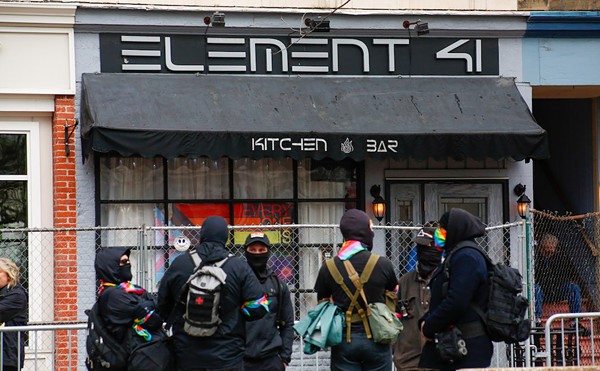Suddenly, the man was behind her, holding a knife to her throat. He dragged her behind a church and threw her into a ditch, ripping her blouse. Terrified, she told him to do what he had to do, as long as he didn't hurt her.
The rapist fled when Nancy saw her son-in-law walking toward them. Police chased him, but came back with the wrong man.
Nancy never got a good look at the rapist, so she never tried to pick him out of a police photo album. She put her fate in God's hands. She got married, raised three children. Pretended to heal.
"I was just happy to be alive," says Nancy, now 49, with cropped gray hair. "He could've sliced my throat."
With no suspects, her case sat unsolved for nearly 13 years. But this winter, Cleveland Police began calling again. They had found the man who attacked her. DNA testing -- a tool unavailable when Nancy was raped in 1992 -- linked the assault to 33-year-old William E. Dubose Jr.
Having spent the past decade in and out of jail for theft, vandalism, and breaking and entering, Dubose has now been indicted for raping two other Cleveland women.
Yet Nancy doesn't want to testify against him. As much as she would love to see her rapist suffer, she's not sure Dubose is the one. Thirteen years later, he doesn't look like the young man she remembers.
And like many rape victims, she is torn between her desire to punish her attacker and a reluctance to relive painful details she spent years trying to forget.
"What you gonna get out of it?" she asks. "Nothing but another heartache."
The advent of DNA testing was supposed to offer hope to thousands of rape victims by providing surefire proof for a crime that was always difficult to prove. Of the small percentage of rapes that are reported to police, there is only a 16 percent chance that the rapist will end up in prison, according to the Rape, Abuse & Incest National Network.
In Cleveland, DNA has already helped police catch some of the city's most dangerous predators.
Quisi Bryan -- who was sentenced to death for shooting patrolman Wayne Leon at a gas station -- has now been indicted for raping two women in 1994. Nathan C. Ford of Akron was indicted for raping eight women in Cleveland. Police say he broke into one woman's home, propositioned others on the street, and even attacked a woman at Cleveland State University while she was studying.
Still, thousands of unsolved rape cases remain on file at the Cleveland Police Department, with countless more languishing across the state. Thanks to the usual government obstacles, DNA testing has never become the magic bullet many hoped for.
In 2000, the Ohio Bureau of Criminal Investigation and Identification set up a database that compared crime-scene evidence with the DNA of violent offenders nationwide. But less than a year into the program, its federal funding ran out. More money was promised, but never came.
Two successive Ohio attorneys general -- Betty Montgomery and Jim Petro -- watched as a backlog of samples from convicted criminals piled up.
The money finally arrived last year, according to Chief Deputy Attorney General Jim Canepa. By that time, the newspapers were full of stories about serial rapist Robert Patton Jr., who attacked numerous women in the Linden area north of Columbus while his DNA samples -- taken when he served time for burglary -- sat untouched for three years.
Finally, Petro decided to use money from the Crime Victims Compensation Fund to process a backlog of more than 19,000 samples.
The backlog is gone now, Petro spokesman Bob Beasley says. But state officials still have to keep up with thousands of new samples from new crimes and new offenders. Testing one rape kit costs about $1,100 and can take an average of six months.
Thanks to a new state law that took effect in May, anyone convicted of a felony or certain misdemeanors must submit DNA samples. By the end of the year, Beasley estimates, Ohio's database will grow to more than 160,000 -- nearly triple what it was at the start of this year.
Though Beasley says that the Ohio database has identified suspects in more than 1,000 investigations, the state doesn't track how many indictments resulted. The U.S. Justice Department, which gave more than $95 million in DNA-related grants last year, doesn't keep those numbers either.
Cleveland just started getting matches back from the state database last year. More than 100 hits resulted, yet Cuyahoga County has indicted only 13 suspects so far, according to Rick Bell, supervisor of the major-trial unit in the county prosecutor's office.
"It's definitely a slow process," Bell says. "There's a lot of work that needs to be done on each case."
Only one detective is dedicated full-time to investigating the cold cases, although everyone in the sex-crimes unit helps out, says Sergeant Michael Quinn.
Tackling the rest of the growing list is a "monumental task," adds Edward Tomba, commander of the special investigations.
For Nancy, the DNA evidence comes too late to bring any sense of comfort. She would still like to see her rapist "locked up for a long time." But more than anything, she wants to be left alone.
"I really don't give a damn," she says.














